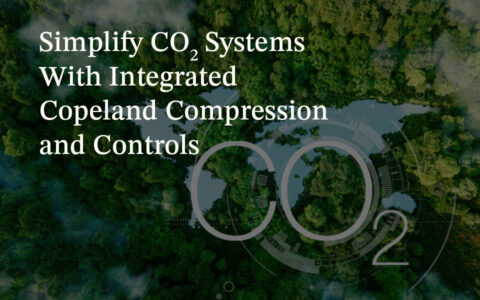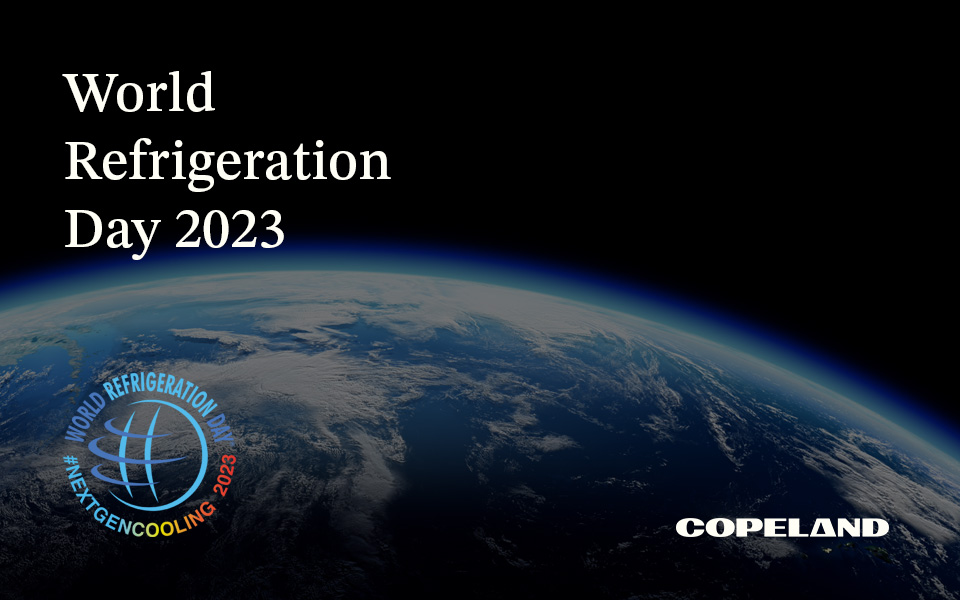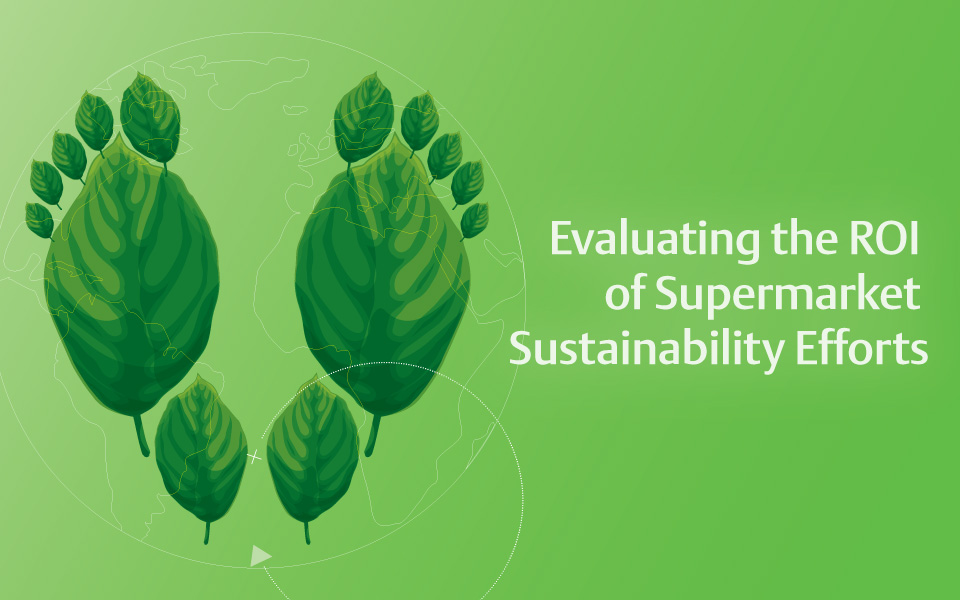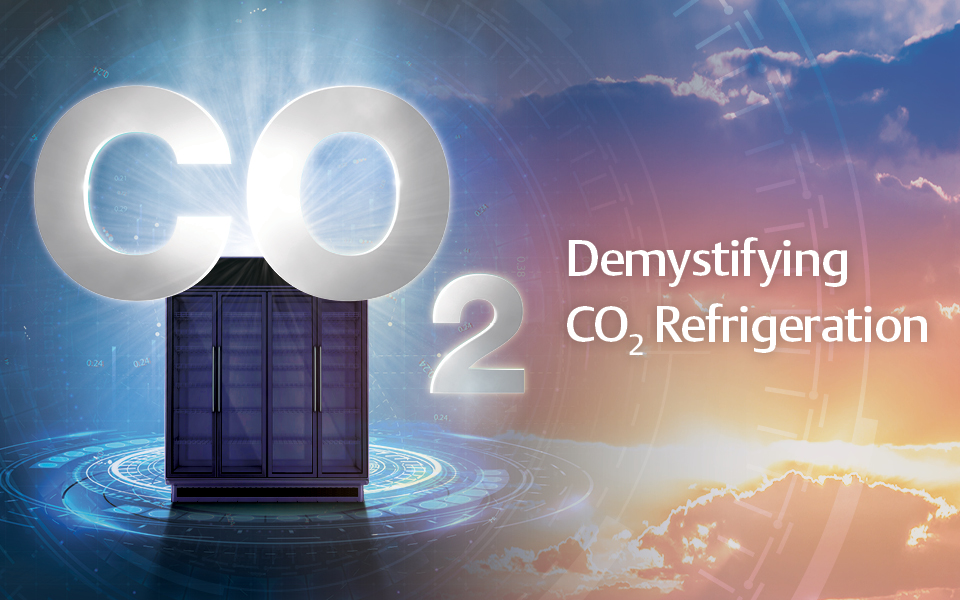Simplify CO₂ Systems With Integrated Copeland Compression and Controls

Adoption of CO2-based refrigeration is on the rise in U.S. food retail markets. As supermarket owners and operators transition from legacy hydrofluorocarbon (HFC) refrigerants, many are evaluating CO2 in their next-generation equipment strategies. Offering a combination of low global warming potential (GWP) and energy-efficient performance, this natural refrigerant can also help retailers to meet their long-term sustainability objectives. In a recent E360 article, I explored the benefits of Copeland’s approach to developing fully integrated, CO2-qualified compression, controls and components.

Like any refrigerant, R-744 has unique thermophysical characteristics that impact system design, installation and management. With more than a decade of investments in CO2-specific research and development (R&D), Copeland is leading the advancement of integrated CO2 technologies. Our R&D efforts continue to focus on minimizing operational challenges and leveraging CO2’s sustainability benefits:
- Effectively managing CO2’s high pressures
- Maximizing CO2’s potential for heat reclamation and/or sustainability purposes
- Optimizing CO2 system efficiencies in multiple climate zones in North America
CO2 transcritical booster systems provide a proven sustainable alternative for retailers seeking a centralized replacement to traditional direct expansion (DX) HFC systems. These systems have been deployed globally for more than a decade and are designed to use R-744 for both medium-temperature (MT) and low-temperature (LT) refrigeration loads. Today’s first-time adopters of CO2 can leverage years of field research and technological improvements to apply the latest system design techniques.
Controls to automate, manage and connect
Copeland has created an integrated network of system- and case-level controls to help food retailers oversee system management and enable deep visibility into CO2 system performance. Built-in connectivity simplifies the installation, management and maintenance of CO2 systems.
The E3 supervisory control for CO2 applications is the CO2-specific version of Copeland’s next-generation facility management and refrigeration control platform. Delivering advanced CO2 refrigeration management and control in an easy-to-use platform, the E3 CO2 enables visibility to compressor performance, high-pressure controllers and case controllers from one centralized location. It’s designed to optimize system performance in multiple ways:
- Alleviates set-up complexities by consolidating multiple applications into one workflow
- Reduces start-up time via a simplified, one-time tuning of system parameters
- Supports system design optimization strategies (e.g., adiabatic gas cooler, parallel compression, etc.)
- Enables user-defined customization of required system values into one view
The stand-alone CC200 case controller is designed to provide robust case control and communication with the E3 CO2, E3, E2 and Site Supervisor controls. As part of a connected infrastructure, it helps to bring a facility’s network of refrigerated cases into one view for:
- Simplified CO2 system management
- Tight temperature control
- Remote case monitoring
- Modular support for multi-evaporator cases
- Bluetooth® connectivity for quick troubleshooting (and mobile app integration)
- Alarms and notifications monitoring
- Demand defrost support for energy optimization
The XM600 Series of advanced controllers delivers reliable performance, integration with Copeland’s entire supervisory platform and control over CO2 case networks to:
- Manage defrost cycles
- Initiate clean mode function
- Support multiple probe regulation
CO2-rated compression technologies
Since the early days of CO2 refrigeration in the U.S., Copeland has helped to lead the R&D and application of state-of-the-art CO2 compression technologies. Our commitment to innovation has resulted in continuous improvements in reliability, performance and energy efficiency. Copeland compressors are equipped with on-board electronics to enable communication with the E3 CO2, E3 and E2 supervisory controls and deliver a variety of operational benefits:
- Electronic protection and control improve system reliability and visibility
- Predictive diagnostics enable early detection while avoiding major repairs
- Remote and on-board communication support fast, off-site troubleshooting
- Simplified rack wiring reduces system start-up complexities
These capabilities help end users to reduce downtime while giving technicians access to data insights that help them to quickly diagnose and repair CO2 systems.
Copeland ZO compressors bring the legendary reliability and performance of Copeland scroll to CO2 refrigeration applications:
- Supports LT (subcritical) loads
- Offers a discrete small footprint and low noise levels
- Enables digital capacity modulation from 10 to 100 percent
Copeland semi-hermetic CO2 compressors leverage the industry’s most utilized and trusted platform in the U.S. food retail market. The Copeland 4MTLS Series is designed for MT transcritical applications while the Copeland 4MSLS Series supports LT subcritical uses. Advantages include:
- Provides complete compression solution for a CO2 transcritical booster system
- Pairs with Copeland variable frequency drives, EVM/EVH Series
- Offers low oil circulation rates
- Operates with low sound and minimal vibration
- Can withstand higher stand-still pressures
From advanced leak detection devices and pressure sensors to bypass valves and oil-level controls, Copeland offers a full suite of controls and components to enable seamless integration of CO2 systems. To learn more about the emergence and application of CO2 refrigeration in commercial refrigeration, please visit our CO2 resource center.

Looking Toward the Next Generation of Cooling on World Refrigeration Day
by Rajan Rajendran | Cold Chain
Every year on June 26, we pause to celebrate World Refrigeration Day — a day when global...

Evaluating the ROI of Supermarket Sustainability Efforts
by Andre Patenaude | Cold Chain
The spectrum of supermarket sustainability concerns has expanded significantly in recent years. As...

Seven Keys to Demystifying CO2 Refrigeration
by Andre Patenaude | Cold Chain
The U.S. commercial refrigeration market is poised for a surge in the use of CO2 (R-744) as a...
The post Simplify CO2 Systems With Integrated Copeland Compression and Controls appeared first on Copeland E360 Blog.